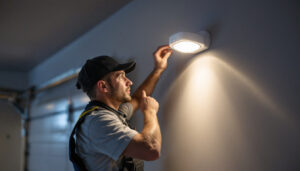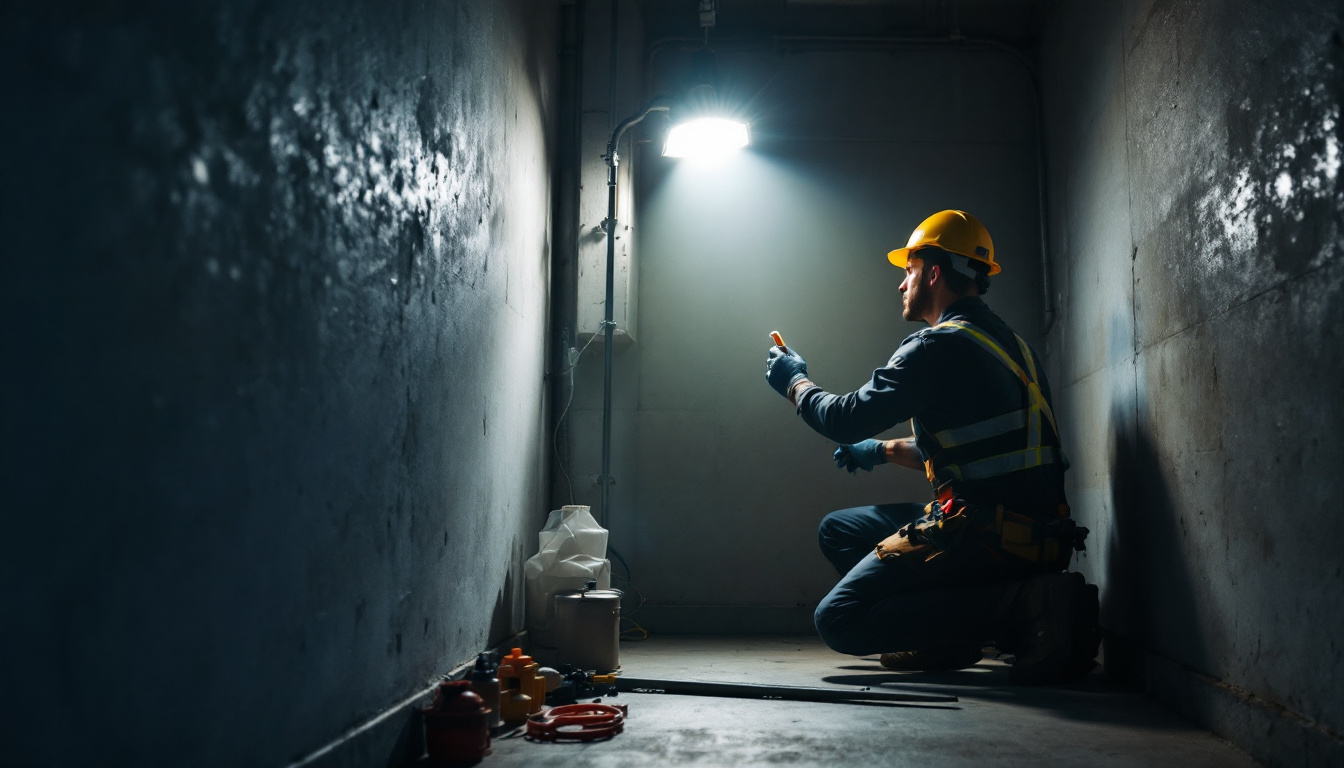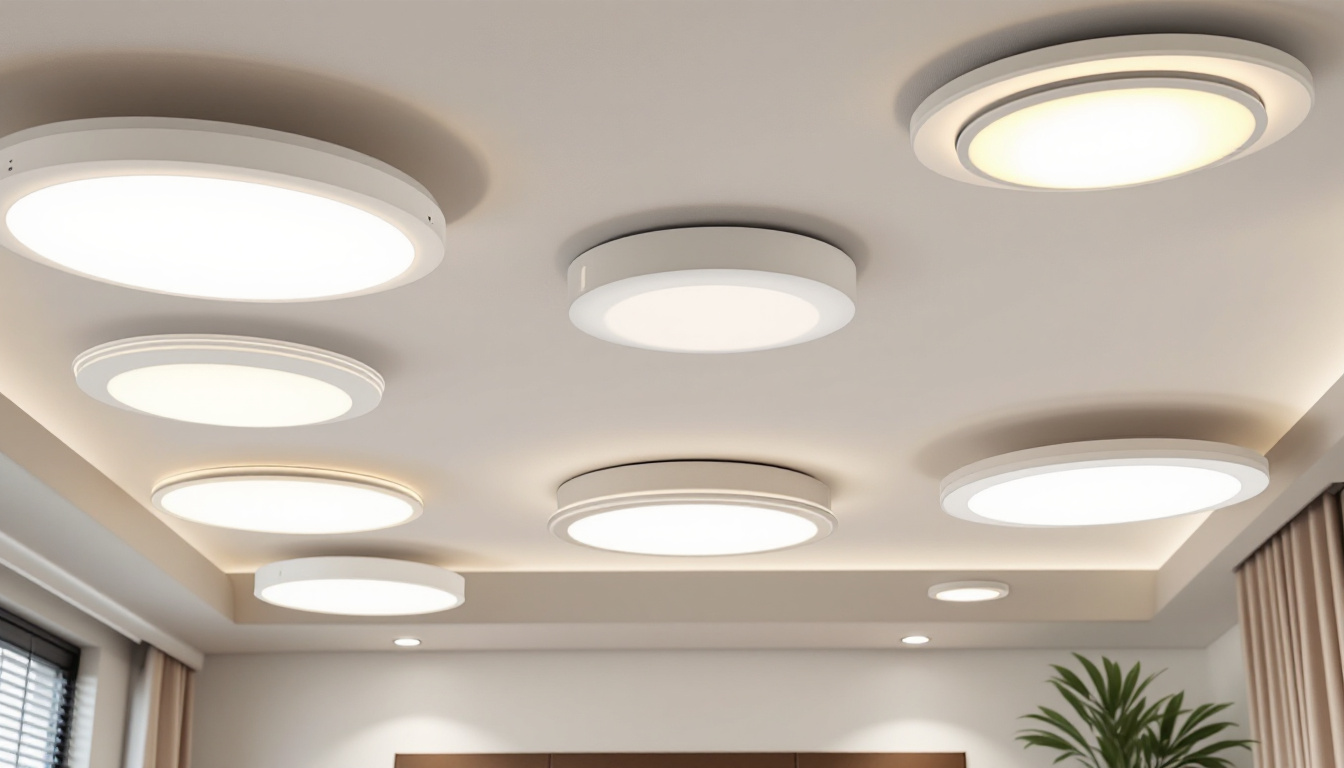

In the realm of lighting installations, the significance of appropriate lighting cannot be overstated. For contractors and electricians, understanding the nuances of lighting design is essential, particularly in spaces like garages where functionality and safety are paramount. garage work lights play a crucial role in ensuring that these environments are well-lit, allowing for efficient work and enhancing safety. This article delves into the importance of garage work lights, their features, and how they can transform a workspace.
Garages are often multifunctional spaces. They serve not only as storage areas for vehicles but also as workshops, storage for tools, and sometimes, even as recreational spaces. Given their varied uses, adequate lighting is essential to facilitate safe and effective work.
Without proper lighting, tasks can become cumbersome and hazardous. Poor visibility can lead to accidents, misplacing tools, and even injuries. Therefore, investing in quality garage work lights is not merely a choice but a necessity for any contractor looking to enhance their service offerings.
Safety is a primary concern in any workspace, and garages are no exception. Proper lighting minimizes the risk of accidents caused by tripping over tools, misjudging distances, or failing to see hazards. A well-lit garage allows workers to navigate the space confidently, reducing the likelihood of injuries.
Moreover, adequate lighting can deter theft and vandalism. A brightly lit garage is less appealing to would-be intruders, providing an additional layer of security for both personal belongings and work equipment. Additionally, the use of motion-sensor lights can enhance safety by ensuring that areas are illuminated as soon as someone enters, further reducing the chances of accidents in dimly lit corners.
In any work environment, efficiency is key. Inadequate lighting can slow down productivity as workers struggle to see what they are doing. Bright, focused lighting allows for better visibility of tasks, leading to faster completion times and improved quality of work.
Furthermore, well-lit areas can help in identifying potential issues more quickly, whether it’s a mechanical problem with a vehicle or a safety concern with tools. This proactive approach not only saves time but also enhances the quality of service provided to clients. The right lighting can also make detailed tasks, such as intricate repairs or assembly work, significantly easier, allowing workers to focus on precision rather than squinting in the shadows. By investing in adjustable lighting solutions, such as LED fixtures with varying brightness levels, garages can adapt to different tasks and needs, ensuring that every job is performed with the utmost care and attention to detail.
Understanding the different types of garage work lights available can help contractors make informed decisions when selecting the right lighting solutions for their projects. Each type has its unique advantages and applications, catering to various needs and preferences.
LED work lights have gained immense popularity due to their energy efficiency and longevity. They produce bright light while consuming less power compared to traditional incandescent or fluorescent lights. This efficiency translates to lower energy bills, making them an economical choice for contractors.
Additionally, LED lights are durable and resistant to shock and vibrations, which is particularly beneficial in a garage setting where tools and equipment can be moved frequently. Their versatility allows them to be used in various configurations, whether mounted on walls or used as portable lights. Many LED work lights also come with adjustable brightness settings, allowing users to tailor the light output to specific tasks, enhancing both visibility and comfort during work.
Fluorescent lights have been a staple in garage lighting for years. They provide a broad spectrum of light and are relatively inexpensive to install. These lights are suitable for larger spaces, as they can illuminate wide areas effectively.
However, it is essential to consider that fluorescent lights may flicker and take time to warm up, which can be a drawback in a fast-paced work environment. Nevertheless, they remain a viable option for many contractors looking for budget-friendly solutions. Additionally, advancements in fluorescent technology have led to the development of high-output and energy-efficient models that can minimize warm-up time and flickering, making them more reliable than ever for consistent lighting needs.
Halogen work lights are known for their bright, white light and are often used in situations requiring high visibility. They are particularly effective for detailed work, as they provide excellent color rendering, allowing workers to see true colors and details.
However, halogen lights can generate significant heat, which may be a concern in enclosed spaces. Proper ventilation is necessary to ensure safety and comfort when using these lights for extended periods. Additionally, halogen lights typically have a shorter lifespan compared to LED options, which means they may require more frequent replacements. Despite this, their ability to produce a high lumen output makes them a preferred choice for tasks that demand precision and clarity, such as automotive repairs or intricate woodworking projects. Furthermore, many halogen models are designed to be portable, featuring sturdy stands and handles, which enhance their usability in various work environments.
When selecting garage work lights, several features should be considered to ensure optimal performance and suitability for the intended use. Understanding these features can help contractors make informed decisions that align with their clients’ needs.
The brightness of a light is measured in lumens. For garage work lights, a higher lumen count is generally preferable, as it ensures adequate illumination for various tasks. Depending on the size of the garage and the nature of the work being done, contractors should aim for lights that provide sufficient brightness without causing glare.
For example, a standard garage may require around 300-400 lumens per square meter for general tasks, while more detailed work may necessitate higher lumens to ensure clarity and precision.
Color temperature is another crucial factor to consider. Measured in Kelvin (K), it indicates the warmth or coolness of the light emitted. For garage work, a color temperature between 4000K and 5000K is often ideal, as it provides a neutral white light that enhances visibility without causing eye strain.
Cooler temperatures (above 5000K) can create a more sterile environment, which may be beneficial for detailed work, while warmer temperatures (below 3000K) can create a cozy atmosphere but may not be suitable for all tasks.
Portability is a significant consideration for garage work lights, especially for contractors who may need to move lights around frequently. Many modern work lights come with features such as handles, hooks, or tripods that facilitate easy transport and positioning.
Additionally, some lights can be mounted on walls or ceilings, providing a permanent solution for illumination. Contractors should assess the specific needs of the garage space to determine the best mounting options that will maximize efficiency and safety.
Proper installation is essential to ensure that garage work lights function effectively and safely. Contractors must take into account various factors during the installation process to achieve optimal results.
Before installing garage work lights, it is crucial to assess the existing electrical wiring and load capacity. Overloading circuits can lead to electrical failures or even fires, making it imperative to ensure that the electrical system can handle the additional load.
Consulting with an electrician may be necessary to evaluate the current setup and make any necessary upgrades or modifications. This step is vital for both safety and compliance with local electrical codes.
The placement of lights within the garage can significantly impact their effectiveness. Strategically positioning lights to minimize shadows and maximize coverage is essential for creating a well-lit environment.
For instance, placing lights at different heights and angles can help illuminate work areas more effectively. Additionally, considering the layout of the garage and the tasks performed in various zones can guide optimal light placement.
Once garage work lights are installed, regular maintenance is necessary to ensure their longevity and performance. Contractors should educate clients on the importance of keeping lights clean and functional.
Dust and grime can accumulate on light fixtures, diminishing their brightness and efficiency. Regularly cleaning the fixtures and bulbs can help maintain optimal performance. Using a soft cloth and a gentle cleaning solution can effectively remove dirt without damaging the lights.
Additionally, ensuring that the garage is kept organized and free from excessive dust can contribute to the longevity of the lighting system.
Over time, bulbs may burn out, and fixtures may require replacement. Contractors should advise clients on the expected lifespan of various types of bulbs and the importance of timely replacements to maintain adequate lighting levels.
Keeping a stock of replacement bulbs on hand can help ensure that clients are never left in the dark. Educating clients about the signs of failing lights can also prompt timely maintenance and replacements.
In conclusion, garage work lights are a critical component of lighting installations that significantly impact safety, efficiency, and overall functionality. Contractors must understand the various types of lights available, their features, and the importance of proper installation and maintenance.
By prioritizing adequate lighting in garages, contractors can enhance their service offerings, ensuring that clients have safe, efficient, and well-lit workspaces. Investing in quality garage work lights is not just about illumination; it is about creating environments where work can be done safely and effectively.
As the demand for multifunctional garage spaces continues to grow, the role of lighting becomes increasingly vital. By staying informed about the latest trends and technologies in garage lighting, contractors can position themselves as leaders in the industry, delivering exceptional value to their clients.
Ready to elevate your garage lighting installations to the next level? At LumenWholesale, we provide contractors with the high-quality, spec-grade lighting solutions you need to ensure every workspace is brilliantly lit. With our competitive wholesale pricing and commitment to cutting out unnecessary markups, you can trust that you’re getting the best value for your investment. Our extensive product range meets rigorous industry standards, so you can deliver reliable, high-performance lighting to your clients every time. Plus, with the convenience of free shipping on bulk orders, you can stock up on premium lighting without the worry of hidden fees. Don’t compromise on quality or cost. Visit LumenWholesale today and experience the ideal combination of quality, affordability, and convenience for all your lighting needs.

Discover the fascinating history and science behind fluorescent light bulbs.

Discover the rising significance of MR16 LED globes in the lighting industry.

Discover essential tips for lighting contractors to avoid common pitfalls when using LED work lights.

Explore the pros and cons of false ceiling light covers versus alternative options in this insightful guide tailored for lighting contractors.
Get notified when NEW deals are released.
Optimize your budget with wholesale discounts.
Only top-quality, specification-grade lighting products.
No additional costs at checkout - what you see is what you pay.
We understand the unique needs of contractors.